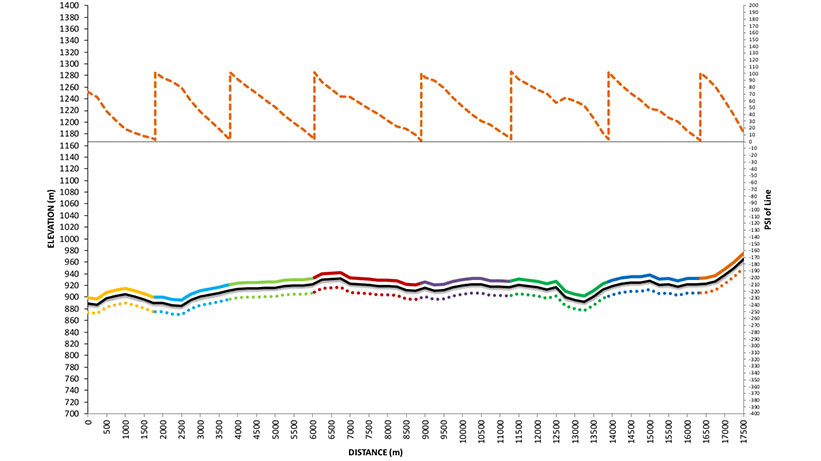Location
Three Hills, Alberta, Canada
Area of Service
Water Transfers
Sector
Oilfield Services
One of Ketek’s great strengths is our ability to move water. Whether for river bypass, flood control or hydraulic fracturing, Ketek can deliver large volumes of water wherever it is needed, winter or summer, from any source and depth.
Pumping water is not as easy as it might seem at first glance. It is an art and a science that involves calculations of atmospheric pressure, volume, flow, friction loss and much more besides. (You can read more about the science here).
For this job, Ketek installed a 20-kilometre line (of eight-inch diameter layflat hose) from an old gravel pit to a client’s frac site. The line ran down the sides of several rural roads and through a number of culverts to two 6,000-cubic-metre C-rings. We were delivering between four and six cubic metres of water per minute (to a maximum of 8,640 cubic metres per day). We were also pumping from the C-rings to the frac pad. There were eight pumps in the line and two at the site (a mix of Global and Thompson pumps).
The line required round-the-clock monitoring and servicing by crews of six to monitor the flow and refuel the machines. One person always remained at the source to shut the line down should any problem arise.
“The biggest challenge of operating in winter is needing extra heat to heat the water so it doesn’t freeze up and gives us time to react to situations,” says Nick Schwartz, project manager for this job. The line was too long to insulate and tarp, so keeping the water flowing was key. “If this line froze, you couldn’t get it unfrozen until spring,” Schwartz says. The snow provides some insulation, but also makes the line harder to rig out, since you have to find and detach the fittings before rolling up the hose.
Cleaning out the culverts is another challenge. They’re frequently overgrown, and may even be home to critters. “If there’s snow, there’s ice, and you need to clean them out to get hose through,” Schwartz says. A vac truck is brought in to help with that work.
It took us five days to install the line and slightly less to take it apart. The pictures and video here were taken when we were removing it.
Slideshow
Each reel holds 200 metres of hose, so for a 20-kilometre line, that means 100 reels.

Shane is a master in the Bobcat, and he doesn’t seem to mind the work too much.
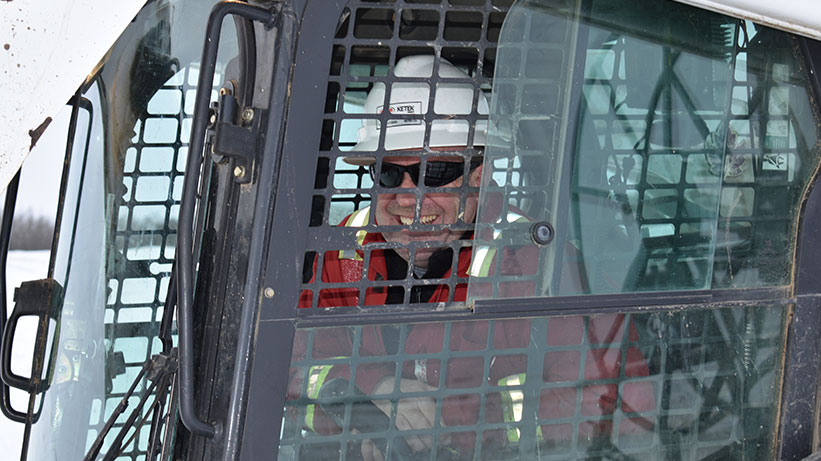
The fittings have to be decoupled before hose can be reeled in. Trying to haul in more than 200 metres at a time may damage the hose.
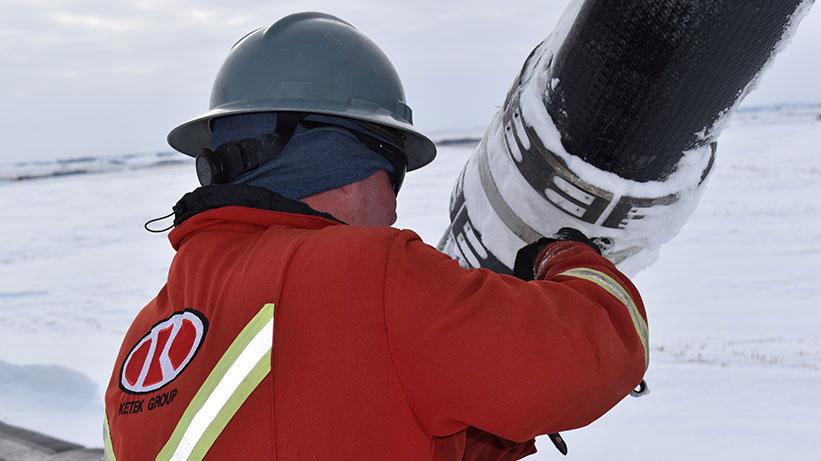
When this line was operating, the water flowing through it is heated enough to ensure that it doesn’t freeze. If it ever does freeze, you likely won’t get it thawed until spring.
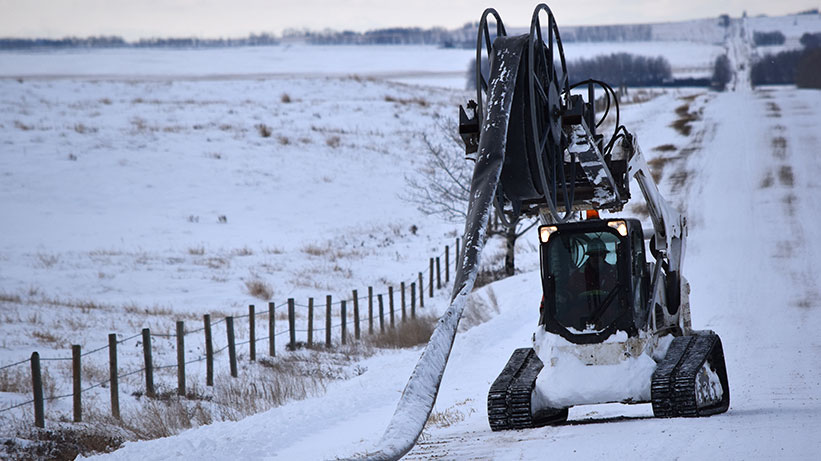
Snow on top of the line will provide some insulation from the cold, but also makes removal more difficult, especially for the guy who has to dig out the couplings.

The reels get loaded onto the trailer to be hauled to the laydown area.
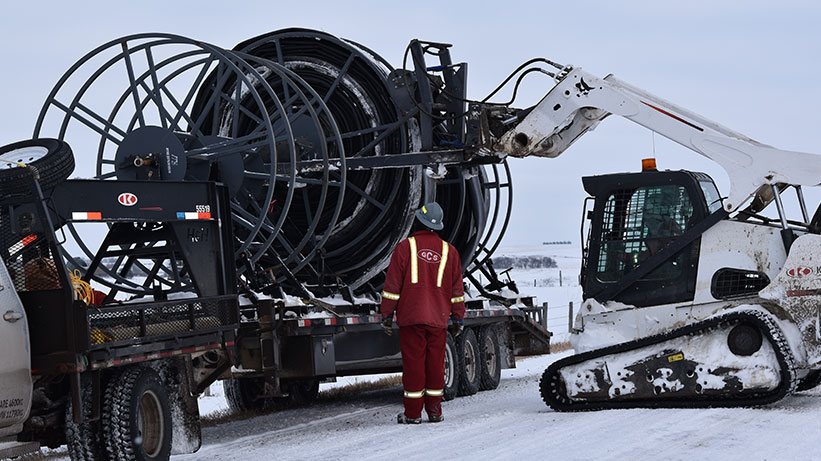
Here’s the “pump profile,” showing where in the line the eight pumps go to ensure the required volume of water gets to its destination.
